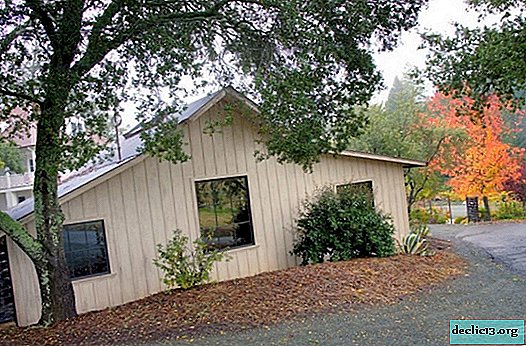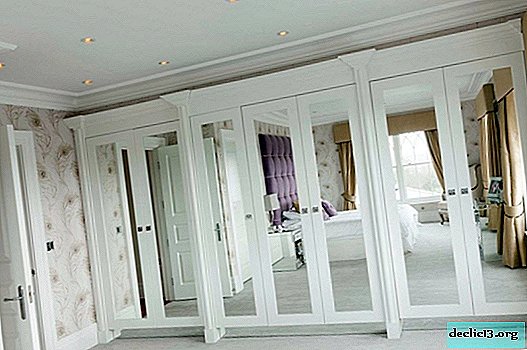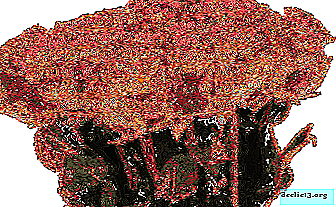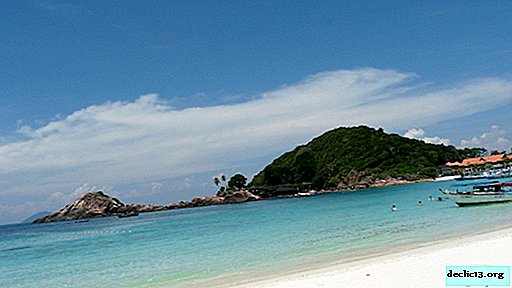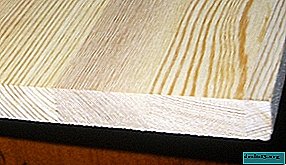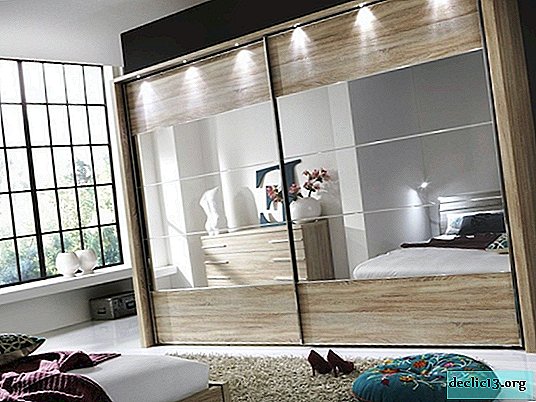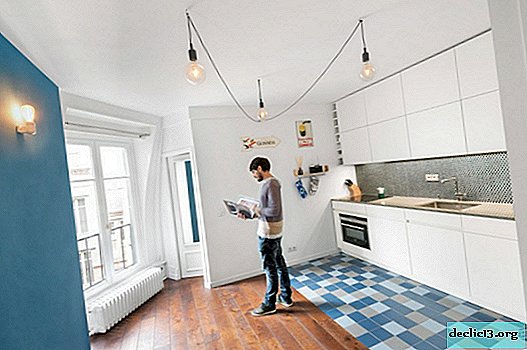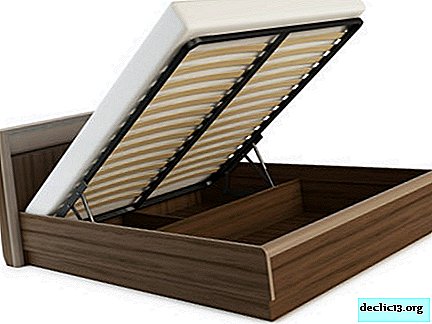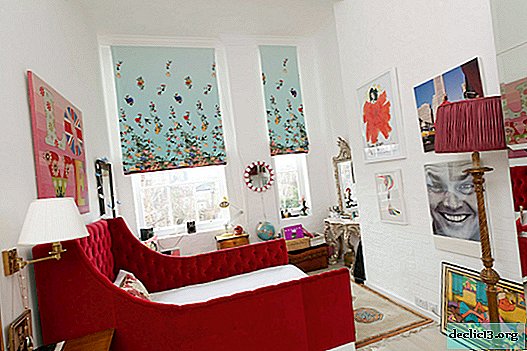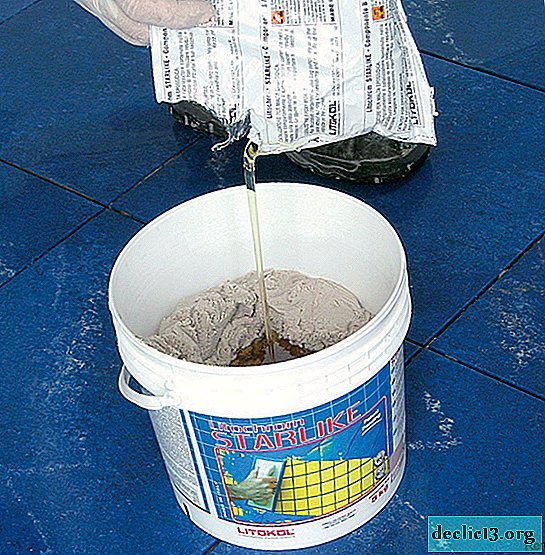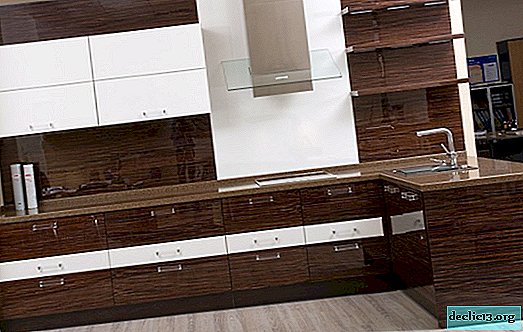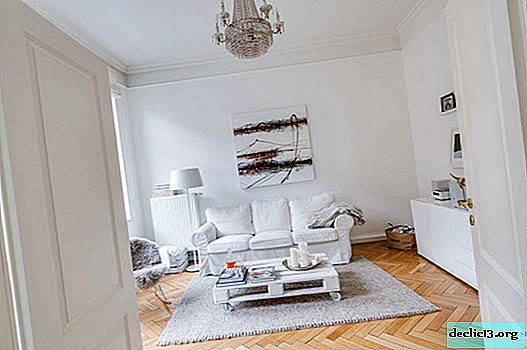Pena Palace: the fabulous residence of the Portuguese kings
This relatively young castle is not like any other building in the world. Pena Palace is in the TOP-20 rating of the most beautiful castles in Europe and, together with the rest of the palaces of the city of Sintra, is on the UNESCO cultural heritage list. The castle is also considered one of the 7 wonders of Portugal.
Slightly below the complex, on the hills of the Sierra da Sintra mountain range, you can see the outlines of other palace buildings and castles of Sintra, even lower in the valley is the small town itself, further on is Lisbon, and on the horizon is the Atlantic Ocean. Such dizzying views opens to visitors the fabulous residence of the Portuguese kings with a wooded cliff above Sintra. The castle is located 450 meters above sea level, above it (528 m) there is only a cross on a neighboring peak.
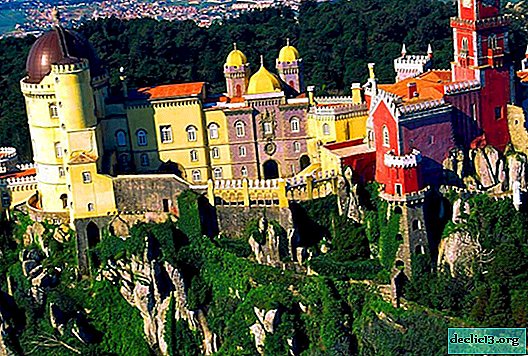
And on the hill to the very foot of the palace stretches a wonderful park garden. Here you can relax after a tour of the castle, in which you feel at least the hero of Disney cartoons: either a fairy-tale prince, or a sea pirate, looking for objects of application of his forces in the sea for a short rest.
A bit of history
The places around the present Pena castle in Sintra have long been loved by kings, they often made a pilgrimage to the highest of the hills here. Back in the Middle Ages, when Portugal gained independence from the Kingdom of Aragon, the chapel of Our Lady of Pena appeared here, then in its place there is a manueline-style monastery.

His story is tragic: at first the construction was significantly damaged by a lightning strike, and a little later, during the earthquake of 1755, only ruins remained from the Jeronimos monastery. They stood inviolable for more than a century, until in 1838 the ruling royal family bought these lands. King Ferdinand II decided to build a summer residence in their place. In 1840, a park was laid here, and then construction began.
What came of this, we can see after almost two centuries. Towers and arches, minarets and domes - Eastern and Moorish styles, Renaissance and Gothic, interspersed of the same Manueline ... And these are not all the styles mixed and mixed up in this eclectic architectural tangle that the German architect Ludwig von Eschwege revealed to the world. The result was a sample of 19th century romantic architecture with elements of a pseudo-medieval. Passion for exoticism is characteristic of the era of romanticism.
Of course, Ferdinand II and Maria II contributed to the project, and much was done according to their wishes. The royal family funded the project and oversaw the construction work. Pena Castle in Portugal was built for 12 years. The royal couple had 12 children, and after the death of his wife (1853) Ferdinand married again in 1869 to actress Elise Hensler, who was given the title of Countess d'Edla before the wedding.

Various works on the arrangement and continuous improvement of buildings and territory were carried out without stopping for many years until Ferdinand's death in 1885.
The countess d'Edla inherited the palace, but in 1889 became the property of the state: the heiress sold it, yielding to the urgent requests of the new king of Portugal, Louis I.
After this, members of the royal family were often here, and Pena Castle became the summer residence of the last Queen of Portugal, Amelie Orleans. Here she lived with children and her husband, King Carlos I.
And in 1908, King Carlos and the eldest son Ameli (grandson of Ferdinand II) died at the hands of terrorists in the very center of the Portuguese capital. Two years later, during the revolution, the youngest son, King Manuel II, also lost his throne. The royal family left Portugal and their favorite residence - Pena Castle in Sintra.
The palace becomes a national museum (Palácio Nacional da Pena) All the interiors in which the last royal dynasty lived were preserved here.
In Sintra, there is another palace in which the monarchs of Portugal lived. If possible, take the time to inspect it.
Palace architecture
Bright, like a patchwork quilt, the colors of the castle walls: yellow, red, terracotta, brown and gray, which we now see in reality and replicated in various souvenir products appeared only a quarter century ago in 1994.

The palace used to be monochrome. But this did not detract from his architectural merits, he always looked impressive. Many photos of the Pena Palace in Portugal, taken from different sides, show how its walls and base are supported by huge rocky boulders.
In the construction of the palace, 4 main parts (areas) are clearly distinguished:
- Outer walls: they have two doors, one next to the drawbridge.
- Castle body: a former monastery, slightly sloping at the very top of the hill. Here is a tower with a clock and characteristic battlements.
- Yard: located opposite the chapel with arches in the wall. The arches are made in the neo-Moorish style.
- The palace itself: a huge bastion in the form of a cylinder.

A ramp leads to the palace; it ends at one of the doors of the circumferential wall - the doors of the Alhambra. Through it, visitors get to the terrace, it is from here a wonderful view of the famous High Cross. The Triumphal Arch leads to the living quarters.

The door that leads to the center of the palace (clutoire), authentic, has been preserved since the XVI century. Spanish-Moorish tiles in this part of the castle have floors and walls.

The Triton Arch (photo above) leads visitors to the Triton Tunnel, and then to the Triton Terrace.

Views of the eastern part of the Pena Palace park and photos of landscapes in fine, clear weather from this point are particularly successful.

And the pictures of the castle itself and the surrounding area are bright and colorful.
The clock tower and the chapel are the restored remains of the medieval monastery of Jeronimites.

If the time of the excursion fell on a cloudy day and the castle was blown by winds from all sides, and the surroundings were drowned in fog, then you also don’t need to despair - a romantic atmosphere in the surroundings of XVIII century architecture is provided for you!
On the terrace you can have lunch and, having eaten, continue the tour already through the halls of the palace inside the bastion.

There are more than a dozen of them. The basis of various collections: samples of antique furniture, collections of antique branded porcelain and fine ceramics, skillful stained-glass windows by famous masters, elaborate chandeliers, many other interior items of those times.

But the interiors themselves in almost all rooms are typically Portuguese: in every room there is a lot of wood, and on the floor and walls there are azulejos tiles - tiles painted in special technique with a size of 14x14 cm

The largest room in the palace is the royal cuisine (photo above). Two furnaces on it are original, and the third is restored.

Authentic (19th century) smoking room chandelier made using floral motifs.
Muhader - this is the name of the style that trimmed the ceiling and walls of the Smoking room. This is the first large room with which the construction of the bastion part of the palace began. Furniture was brought from India in the 40s of the last century.

The chambers of King Carlos I, equipped in the former house of the head priest of the Jerome Monastery.

The chambers of Queen Amelie in the upper floors of the palace.

First, ambassadors were received in the large hall, and then he was adapted for a billiard room.

The lace ceilings of the palace halls are admirable.

Banquet Hall (Hall of the Knights).
Authentic copper markings bear the original palace markings, and embossed with the coat of arms of Ferdinand II on porcelain service collections.
The castle often hosts various thematic exhibitions of collections from the museum's storerooms. The price of a ticket to visit the Pena Palace from Sintra (Portugal) also includes an inspection of their exposition.


Stained Glass Palace Pena.
The President of the Portuguese Republic and other government officials sometimes use the Pena National Palace to receive foreign delegations.
The park
The best view of the palace opens from the park from the statue of the King-organizer of the castle Ferdinand II. To get there, you need to climb up the boulders. Of course, shoes and clothes should be comfortable and safe.

According to the wishes of Ferdinand II, the park at the foot of the Pena Castle is arranged as a romantic garden of those times. Throughout the territory there are many stone arbors and stone benches. Winding paths lead to each. Rare species of trees from around the world and the most exotic plants have been planted and grow throughout the Pena Park. The local climate allowed them to rather easily acclimatize and take root forever.
No one can get around a huge forest area of 250 hectares at a time (and this is about 120 football fields!). And in truth, many tourists admit that after examining the palace from the outside and from the inside, there are almost no forces left on the park. So for those who are interested in botany and landscape park architecture, it makes sense to allocate a separate day for its inspection.

Here you will find everything: waterfalls, ponds and ponds, fountains and lakes. The water system of the entire park is interconnected, and a variety of architectural and decorative objects are scattered around its perimeter. Many interesting points of view of the park around the Pena Palace are reflected on the map, which is best to take with you when setting off on this mini-journey.
At the entrance to the park there are two pavilions and behind them begins the garden of Queen Amelie. You can go to the dovecote to see the 3D model of Sintra exhibited here.

Take a walk along the alleys of the Camellia Garden, look at the royal Valley of ferns.
They are not local varieties, but Australian and from New Zealand, but have taken root well, because before they were cultivated here, they acclimatized to the Azores.
How to get from Lisbon
Several trains per hour (CP line) depart from stations:
- Orientente
- Rossio
- Entrecampos
Travel time to Sintra from 40 min. up to 1 hour, fare 2.2 euros. Further from the railway station - by bus No. 434 of Scotturb for 3 euros (5.5 euros round trip). The distance to the palace complex is 3.5 km, the road goes steeply uphill.
By car: you need to go to the IC19 highway. Navigational coordinates of the Pena Palace in Sintra: 38º 47 '16.45 ”N 9º 23' 15.35” W.
If you are already in the historical center of Sintra and prefer leisurely walks through its palaces and parks, then you can get to this complex with hiking trails:
- From the Moorish Palace (Percurso de Santa Maria), breaking 1770 meters in about an hour
- From Percurso da Lapa - 1450 meters in 45 minutes with a calm step.
Ticket price and visit time
Garden-architectural complex of the Pena castle in Sintra (Portugal)
during the summer season is available from March 25 to October 27:
- Palace from 9:30 to 20:00
- Park from 9:45 to 19:00
The ticket office stops selling tickets to the palace at exactly 19 hours, and to the park at 18 hours. 15 minutes.
It is possible to buy tickets for inspection of individual objects and combined.

With the end of the main tourist season, the cost of entrance tickets usually decreases. The exact cost of tickets and changes in the work schedule before the start of the winter season can be clarified on the website of the Pena Palace in Sintra (www.parquesdesintra.pt).
On site there is the opportunity to hire a personal guide, the price depending on the duration of the tour from 5 euros. Guided tours are available in Portuguese, English or Spanish. Russian-speaking guides, our compatriots living and working in Lisbon, also offer their services on the Internet.
Prices are for September 2018.
In Lisbon, you can also buy a one-day excursion to the Pena Palace for about 80-85 euros (a children's ticket is half cheaper). It is very saturated and includes guide services, travel and meals.
A distinctive feature of this museum complex from other museums in Portugal and in many European countries is that it is allowed to rent an internal museum exhibition here. Therefore, all tourists who have visited Portugal do not miss the opportunity to take a photo of the decoration of the Pena castle, and many take a video. We bring to your attention one of them.
Sintra has always inspired poets and bewitched kings. Be sure to go there and visit the Pena Palace - this fantastic and eclectic monument of the Romantic era. This is one of the most visited architectural monuments of Portugal.


